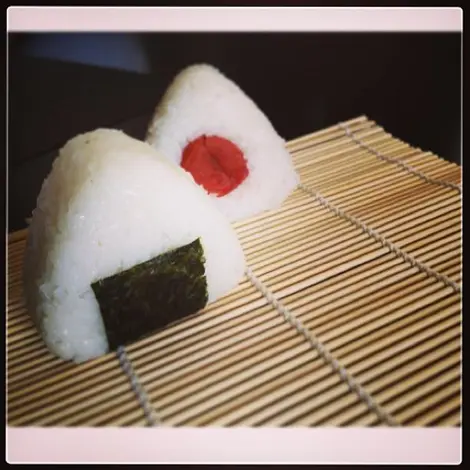Umeboshi 梅干し
A plum with powerful properties
Both natto and umeboshi are often mentioned among the most challenging Japanese specialties for the Western palate! The umeboshi, with its salty and very sour taste is consumed daily in Japanese households because of its many health benefits.
Healing properties
The ume, Japanese plum, features in several Japanese products: umeboshi, umeshu (plum liquor), and umesu (plum vinegar) to name a few...
However, when umeboshi were first introduced to Japan 1,500 years ago from China, they weren't seen as a food but as medicine. Called "ubai" in China, these small plums macerated in salt is cited in Chinese pharmacopoeia written 2,000 years ago. Umeboshi also appear in the oldest surviving Japanese medicine text, Ishinpo. In this book written between 984 and 994, Tamba no Yasuyori lists the many medicinal virtues of umeboshi. From the twelfth century, it became very popular among priests and samurai who attributed extremely powerful effects to it. It was able to revive a fighter, or even bring him back to life! A power, let's face it, rather overestimated. From the Muromachi period (1336-1573), it gradually turned into a food in its own right. Preserved, and therefore able to be stored a long time, samurai consumed it on the battlefield for its nutritional benefits. Made at home from the seventeenth century, it was truly in the nineteenth century that umeboshi found its place on the Japanese table.
Read: Useful drugs at Japanese pharmacies
Harvest time
Harvested at maturity, the ume are washed and cured the day of picking for a period of one month. Shiso leaves are often added to the salt marinade, to give the plums their deep red color. The fruits are then sun-dried for three days and then washed again, sorted, desalted and seasoned. This manufacturing process is done manually, and based on a centuries-old tradition. It's thanks to their long experience that the artisan producers manage to adjust the quantity of salt that's required. Plums are harvested in abundance throughout Japan, but Wakayama prefecture is the most productive region. Consumed daily in a bento on a bed of rice, or in an onigiri, umeboshi are sometimes cited as one of the secrets of longevity and health of the Japanese.
Super sour
These small, wrinkled plums are full of health benefits. Japanese who consume an umeboshi plum with their breakfast tea believe it acts as a system detoxifier and digestive aid. Its high citric acid content is the main source of its benefits. If you find lemon too sour, you might want to give umeboshi a miss - they contain more citric acid than a lemon! Its citric acid helps the body to absorb calcium, soothe headaches, activate metabolism, prevent fatigue and even has antibacterial effects, which proved very useful during the epidemics of cholera of the nineteenth century in Japan. As for the energizing qualities of umeboshi, they have been renowned since the Sengoku period (1450-1573). Umeboshi plums were given to combat warriors to help them regain their strength. The Japanese still consume them today to regain energy. A plum a day...
See also: Tsukemono
















